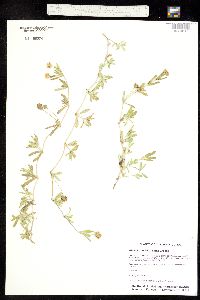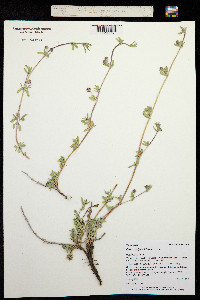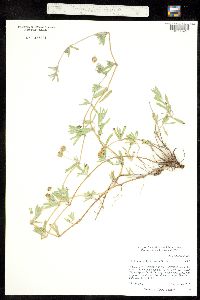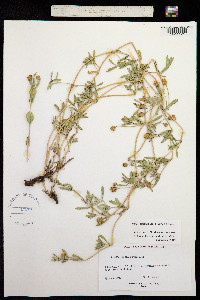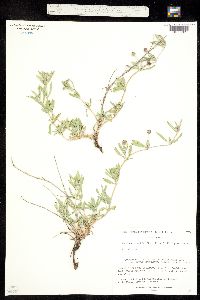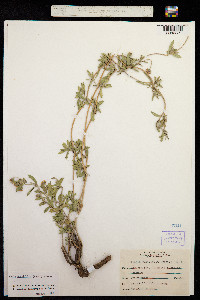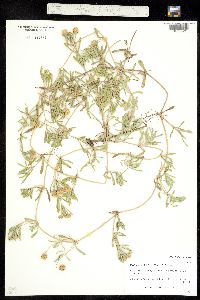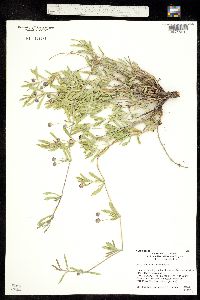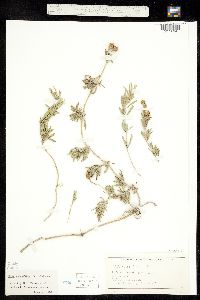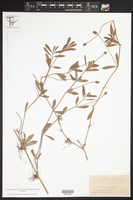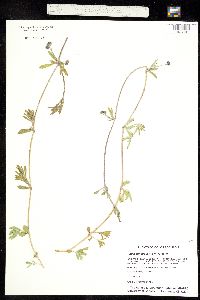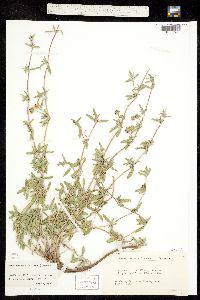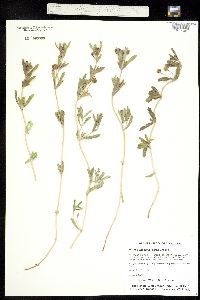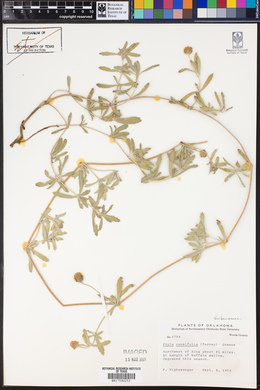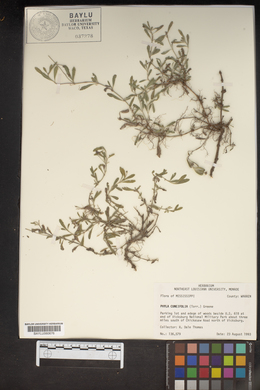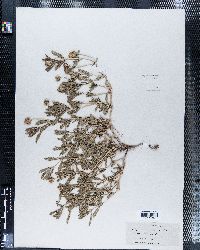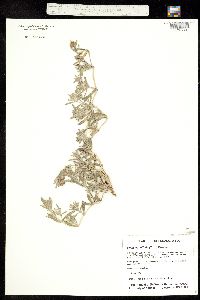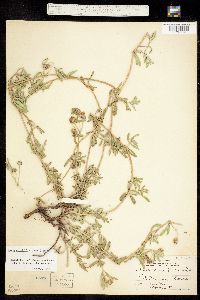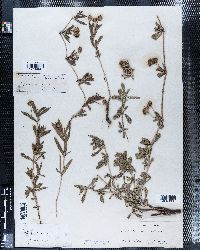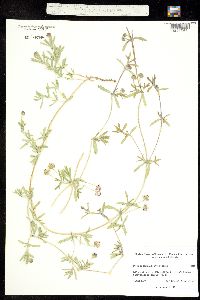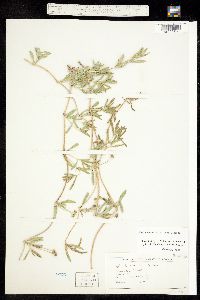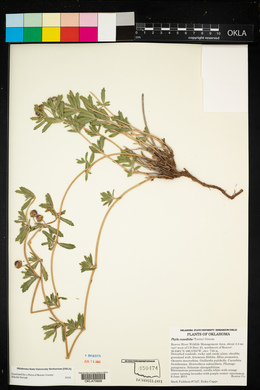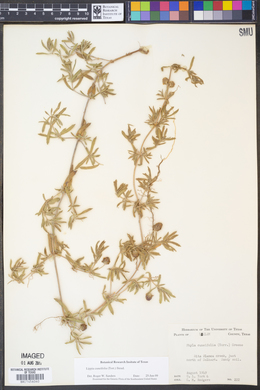Phyla cuneifolia
|
|
|
|
Family: Verbenaceae
Wedgeleaf, more...fogfruit, wedgeleaf fogfruit
[Lippia cuneifolia (Torr.) Steud., moreLippia cuneifolia var. incisa Blank., Zappania cuneifolia] |
Perennial subshrub or herb 5 - 10 cm tall Stem: trailing but not rooting at nodes, densely hairy. Leaves: opposite, 1.5 - 4 cm long, 3 - 8 mm wide, narrow and inversely egg-shaped with a wedge-shaped base and a broadly rounded tip, with one to three teeth per side. Flowers: borne in dense axillary spikes, subtended by abruptly pointed bracts, with a small and membranous calyx and stamens shorter than to slightly longer than the corolla tube. The slender corolla has a tube slightly longer than the calyx and four unqual spreading lobes, appearing somewhat two-lipped. Fruit: two nutlets surrounded by or joined to the calyx. Similar species: Phyla species have axillary inflorescences, four-lobed corollas and fruit separating into two nutlets. Phyla lanceolata differs by having lance- to egg-shaped leaves with pointed leaf tips and five to eleven teeth per side. Flowering: May to September Habitat and ecology: Introduced from the western United States, this species is only found in Porter County. Elsewhere, it grows in disturbed areas. Occurence in the Chicago region: non-native Etymology: Phyla means tribe. Cuneifolia means "having wedge-shaped leaves." Author: The Morton Arboretum Kearney and Peebles 1969, McDougall 1973 Duration: Perennial Nativity: Native Lifeform: Subshrub General: Herbaceous perennials from a woody base; stems trailing along the ground and rooting at the nodes, 20-100 cm long, puberulent, square in cross section. Leaves: Opposite and sessile, clustered on short branches at stem nodes; blades oblanceolate to obovate, 1-3 cm long, thickish, with a conspicuous midrib, margins with 1-4 pairs of teeth close to the leaf tip, surfaces canescent with long, soft hairs. Flowers: White-lavender, clustered in dense capitate spikes, these globose in flower and elongating to ovoid in fruit, on peduncles from the leaf axils; peduncles shorter than or up to 2 times as long as subtending leaves; each flower subtended by a broad bractlet, these imbricate where visible at the bottom of the spike; calyxes campanulate, 2-lipped, 4-toothed, and strigose; corollas white to pink to purple, 4 mm long, 2-lipped, with 4 lobes. Fruits: Schizocarps oval, separating into 2 nutlets. Ecology: Found in gravelly soils, near stream beds and playas, from 4,000-7,000 ft (1219-2134 m); flowers June-August. Distribution: SD to WY and UT, south to TX, NM, AZ, and MEX. Notes: This distinctive trailing herb is uncommon, though present in most Arizona and New Mexico counties. The stems trail along the ground, and each stem node has a cluster of long, narrow leaves with prominent midveins and a few teeth near the slightly widened tips. Some of the stem nodes also have a round cluster of light purple flowers elevated above the leaves on a slender peduncle. These distinctive capitate heads with the little bilabiate flowers could be confused with Valeriana. However, Phyla has corollas with 4 lobes, while Valeriana has corollas with 5 lobes and a distinctive smell. Ethnobotany: Poultice of plants applied to spider bites. Synonyms: Zapania cuneifolia, Lippia cuneifolia, Lippia cuneifolia var. incisa Editor: LCrumbacher2012, AHazelton 2015 Etymology: Phyla comes from the Greek phyle, "tribe," probably from the flowers being tightly clustered in heads, and cuneifolia means with leaves tapered to the base. A western sp., is intr. at St. Louis and may be expected in our region. It differs from both of the following spp. in its narrow, linear-oblanceolate or narrowly cuneate lvs 4-10 times as long as wide, less than 1 cm wide, with 1-3 teeth on each side toward the summit. Gleason, Henry A. & Cronquist, Arthur J. 1991. Manual of vascular plants of northeastern United States and adjacent Canada. lxxv + 910 pp. ©The New York Botanical Garden. All rights reserved. Used by permission. |
|
|
|









